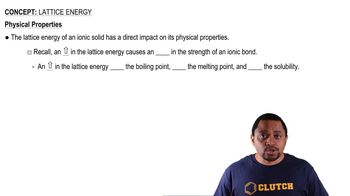Textbook Question
What is the best prediction for the carbon–oxygen bond length in the carbonate anion, CO3 2-? (LO 7.14)Data for average carbon-oxygen bond lengths: (a) 143 pm (b) 132 pm(c) 121 pm(d) 118 pm
 Verified step by step guidance
Verified step by step guidance



Use formal charge to select which resonance structure makes the largest contribution to the resonance hybrid. (LO 7.16) (a) Structure I (b) Structure II (c) Structure III (d) All structures are equivalent and make the same contri-bution to the resonance hybrid. (I)
(II)
(III)
Two electrostatic potential maps are shown, one of methyl-lithium (CH3Li) and the other of chloromethane (CH3Cl). Based on their polarity patterns, which do you think is which? (a)
(b)